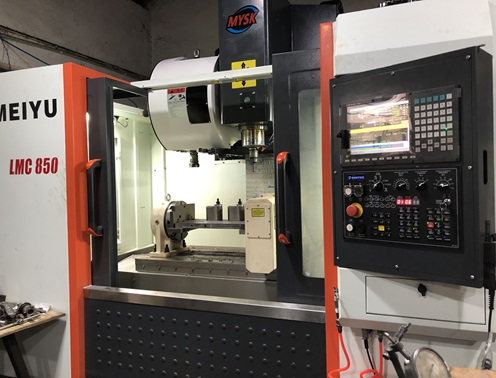Ningbo Yinzhou Gain Machinery Co.,Ltd (Metaphönix GmbH ) devotes to supply high quality metal machining parts. Today, engineer would like to share some common processes of precision machining.
- CNC Milling:Computer Numerical Control (CNC) milling uses a rotating cutting tool to remove material from a workpiece. The tool moves along multiple axes (usually three or more in precision milling) to create complex shapes, slots, pockets, and contours. The workpiece is held firmly in a fixture on the milling machine’s table. The cutting tool’s rotation speed, feed rate, and depth of cut are precisely controlled by the CNC program.
- CNC Turning: In CNC turning, the workpiece rotates while a stationary cutting tool removes material to create cylindrical or conical shapes. The cutting tool moves along the length of the rotating workpiece to shape it. Advanced CNC turning machines can perform operations such as facing, threading, and grooving with high precision. The rotational speed of the workpiece and the movement of the cutting tool are controlled by the CNC program to achieve the desired dimensions and surface finish.
- Grinding:Grinding uses an abrasive wheel to remove material from the workpiece. The abrasive particles on the wheel, which can be made of materials like aluminum oxide or silicon carbide, cut into the workpiece through a combination of pressure and relative motion. There are different types of grinding, such as surface grinding (for flat surfaces), cylindrical grinding (for cylindrical workpieces), and centerless grinding (for long, slender parts without the need for center – holding). The grinding process can achieve extremely fine surface finishes and tight tolerances.
- Electrical Discharge Machining (EDM): EDM is based on the principle of removing material through electrical discharges between an electrode and the workpiece. The workpiece and the electrode are submerged in a dielectric fluid, which acts as a medium for the electrical discharges. As the electrical energy is discharged, it melts and vaporizes a small amount of material from the workpiece. There are two main types of EDM: wire EDM, where a thin wire electrode is used to cut through the workpiece, and sinker EDM, where a shaped electrode is used to create cavities in the workpiece.
- Laser Machining:Laser machining uses a high – intensity laser beam to remove material from the workpiece. The laser beam can be focused to a very small spot, allowing for high – precision cutting, drilling, and engraving. There are different types of laser machining, such as laser cutting (where the laser beam melts or vaporizes the material to create a cut), laser drilling (to create small holes with high aspect ratios), and laser engraving (to create detailed patterns or markings on the surface).

